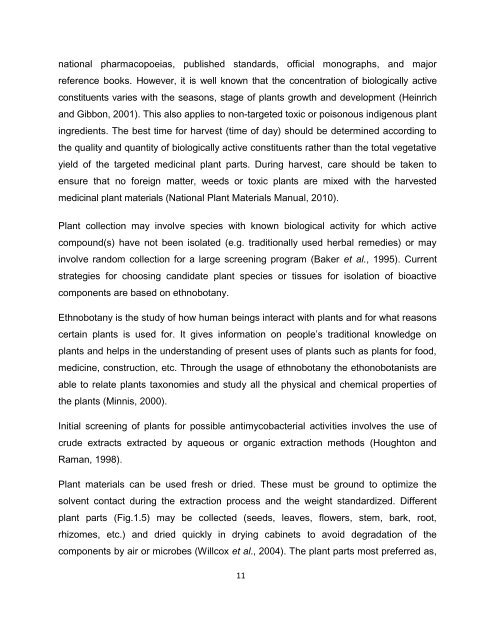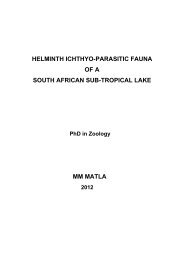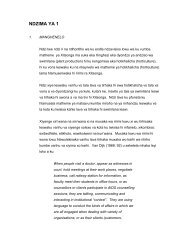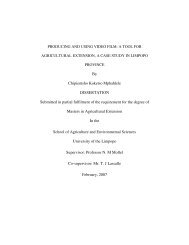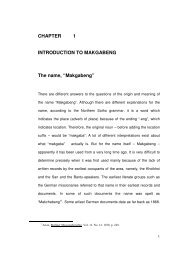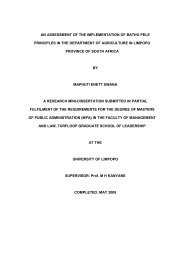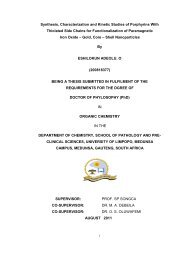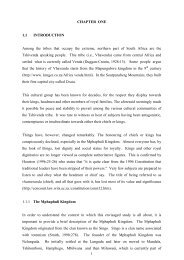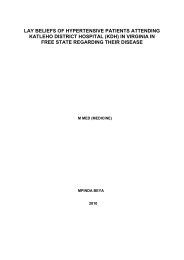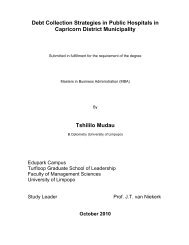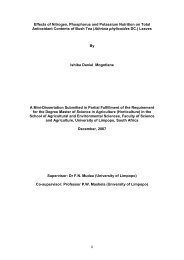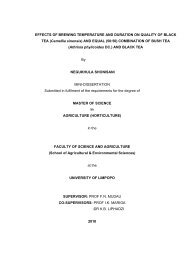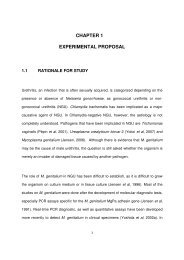Mmushi T MSc (Microbiology).pdf
Mmushi T MSc (Microbiology).pdf
Mmushi T MSc (Microbiology).pdf
You also want an ePaper? Increase the reach of your titles
YUMPU automatically turns print PDFs into web optimized ePapers that Google loves.
national pharmacopoeias, published standards, official monographs, and major<br />
reference books. However, it is well known that the concentration of biologically active<br />
constituents varies with the seasons, stage of plants growth and development (Heinrich<br />
and Gibbon, 2001). This also applies to non-targeted toxic or poisonous indigenous plant<br />
ingredients. The best time for harvest (time of day) should be determined according to<br />
the quality and quantity of biologically active constituents rather than the total vegetative<br />
yield of the targeted medicinal plant parts. During harvest, care should be taken to<br />
ensure that no foreign matter, weeds or toxic plants are mixed with the harvested<br />
medicinal plant materials (National Plant Materials Manual, 2010).<br />
Plant collection may involve species with known biological activity for which active<br />
compound(s) have not been isolated (e.g. traditionally used herbal remedies) or may<br />
involve random collection for a large screening program (Baker et al., 1995). Current<br />
strategies for choosing candidate plant species or tissues for isolation of bioactive<br />
components are based on ethnobotany.<br />
Ethnobotany is the study of how human beings interact with plants and for what reasons<br />
certain plants is used for. It gives information on people’s traditional knowledge on<br />
plants and helps in the understanding of present uses of plants such as plants for food,<br />
medicine, construction, etc. Through the usage of ethnobotany the ethonobotanists are<br />
able to relate plants taxonomies and study all the physical and chemical properties of<br />
the plants (Minnis, 2000).<br />
Initial screening of plants for possible antimycobacterial activities involves the use of<br />
crude extracts extracted by aqueous or organic extraction methods (Houghton and<br />
Raman, 1998).<br />
Plant materials can be used fresh or dried. These must be ground to optimize the<br />
solvent contact during the extraction process and the weight standardized. Different<br />
plant parts (Fig.1.5) may be collected (seeds, leaves, flowers, stem, bark, root,<br />
rhizomes, etc.) and dried quickly in drying cabinets to avoid degradation of the<br />
components by air or microbes (Willcox et al., 2004). The plant parts most preferred as,<br />
11


